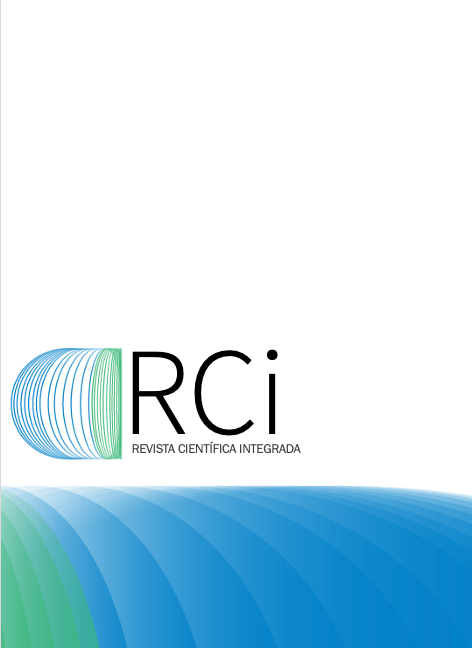Molecular docking of the phospholipase A2 enzyme with bromine derivatives
DOI:
https://doi.org/10.59464/2359-4632.2025.3236Keywords:
Molecular docking, Phospholipase A2, Bromine, Agkistrodon halys pallasAbstract
Objective: To develop a molecular docking study with the enzyme phospholipase A2 (PLA2) in the presence of compounds analogous to p-bromofenacil bromide with a view to drug repositioning. Methods: The tertiary structure of the target protein from Agkistrodon halys pallas (Viperidae) was obtained from the RCSB PDB database, and the ligands obtained from the PubChem website were 4,4'-dibromobenzyl and 2-bromopropiophenone. After refining the molecules, molecular docking analyses were carried out to evaluate the Gibbs free energy, the distances between atoms, and types of bonds in the active site. Results: The compound 4,4'-dibromobenzyl was found to be related to the active site residue Tyr 52 through hydrophobic interactions. Regarding the compound 2-bromopropiophenone, a hydrophobic interaction with the active site residue Tyr 52 and a hydrogen bond with the residue Gly 32 were observed. Other amino acid residues (Gly 32 and Asp 49) located close to the catalysis region presented hydrophobic interactions. Conclusions: Although the ligand atoms are close to the enzyme's catalytic site, they exhibit hydrophobic interactions and hydrogen bonding. In vitro and in vivo studies are needed to corroborate the theoretical results.
References
Capriles PV, Guimarães AC, Otto TD, Miranda AB, Dardenne LE, Degrave WM. Structural modeling and comparative analysis of homologous, analogous and specific proteins from Trypanosoma cruzi versus Homo sapiens: putative drug targets for chagas' disease treatment. BMC Genomics 2010, 11, 610. DOI: https://doi.org/10.1186/1471-2164-11-610.
Luscombe NM, Greenbaumm D, Gerstein M. What is bioinformatics? An introduction and overview. Yearbook of medical informatics 2001, 10(1): 83-100. DOI: https://doi.org/10.1055/s-0038-1638103.
Gauthier J, Vincent AT, Charette SJ, Derome, N. A brief history of bioinformatics. Briefings in bioinformatics 2019, 6, 20. DOI: https://doi.org/10.1093/bib/bby063.
Pinzi L, Rastelli G. Molecular docking: shifting paradigms in drug discovery. International journal of molecular sciences 2019, 20, 18. DOI: https://doi.org/10.3390/ijms20184331.
Hiu JJ, Yap MKK. Cytotoxicity of snake venom enzymatic toxins: Phospholipase A2 and l-amino acid oxidase. Biochemical Society Transactions, v. 48, n. 2, p. 719-731, 2020. DOI: https://doi.org/10.1042/BST20200110.
Murakami M, Sato H, Taketomi Y. Updating phospholipase A2 biology. Biomolecules 2020, 10, 10. DOI: https://doi.org/10.3390/biom10101457.
Lind KF, Hansen E, Østerud B, Eilertsen KE, Bayer A, Engqvist M, Andersen JH. Antioxidant and anti-inflammatory activities of barettin. Marine Drugs, 2013, 11(7), 2655-2666. DOI: https://doi.org/10.3390/md11072655.
Lefi, N., Kazachenko, A. S., Raja, M., Issaoui, N., & Kazachenko, A. S. (2023). Molecular structure, spectral analysis, molecular docking and physicochemical studies of 3-bromo-2-hydroxypyridine monomer and dimer as bromodomain inhibitors. Molecules, 28(6), 2669. Doi 10.3390/molecules28062669
Bordcoch G, Masjoan-Juncos JX. Biomarkers of Cardiopulmonary Injury and Impact of Bromine Toxicity. In: Biomarkers in Toxicology. 2022, Cham: Springer International Publishing. DOI: https://doi.org/10.1007/978-3-031-07392-2_46.
Wallace AC, Laskowski RA, Thornton JM. LIGPLOT: a program to generate schematic diagrams of protein-ligand interactions. Protein engineering, design and selection, 1995, 8 (2): 127-134. DOI: https://doi.org/10.1093/protein/8.2.127.
Eberhardt J, Santos-Martins D, Tillack AF, Forli S. AutoDock Vina 1.2.0: New Docking Methods, Expanded Force Field, and Python Bindings. Journal of chemical information and modeling 2021 23, 61. DOI: https://doi.org/10.1021/acs.jcim.1c00203.
Yuan S, Chan HS, Hu Z. Using PyMOL as a platform for computational drug design. Wiley Interdisciplinary Reviews: Computational Molecular Science 2017, 7, 2. DOI: https://doi.org/10.1002/wcms.1298
Berman HM, Westbrook J, Feng Z, Gilliland G, Bhat TN, Weissig H, Shindyalov, I N, Bourne PE. The Protein Data Bank. Nucleic Acids Research 2000, 28. DOI: https://doi.org/10.1093/nar/28.1.235
Kim S, Chen J, Cheng T, Gindulyte A, He, J.; He, S.; Li, Q.; Shoemaker, B. A.; Thiessen, P. A.; Yu, B.; Zaslavsky, L.; Zhang, J.; Bolton, E. E.; PubChem in 2021: new data content and improved web interfaces. Nucleic Acids Research 2021, 49. DOI: https://doi.org/10.1093/nar/gkaa971.
Pettersen EF, Goddard TD, Huang CC, Couch GS, Greenblatt DM, Meng EC, Ferrin TE. UCSF Chimera—a visualization system for exploratory research and analysis. Journal of Computational Chemistry 2004, 25, 13. DOI: https://doi.org/10.1002/jcc.20084.
Zhao H, Tang L, Wang X, Zhou Y, Lin Z. Structure of a snake venom phospholipase A2 modified by p-bromo-phenacyl-bromide. Toxicon. 1998, 36(6), 875-886. DOI: https://doi.org/10.1016/s0041-0101(97)00169-4.
Gerebtzoff G, Li‐Blatter X, Fischer H, Frentzel A, Seelig A. Halogenation of drugs enhances membrane binding and permeation. ChemBioChem, 2004, 5(5), 676-684. DOI: https://doi.org/10.1002/cbic.200400017.
Abdel-Rahman, L. H., Abdelghani, A. A., AlObaid, A. A., El-ezz, D. A., Warad, I., Shehata, M. R., & Abdalla, E. M. (2023). Novel Bromo and methoxy substituted Schiff base complexes of Mn (II), Fe (III), and Cr (III) for anticancer, antimicrobial, docking, and ADMET studies. Scientific reports, 13(1), 3199.
Schmiel DH, Miller VL. Bacterial phospholipases and pathogenesis. Microbes and infection, v. 1, n. 13, p. 1103-1112, 1999. DOI: https://doi.org/10.1016/s1286-4579(99)00205-1.
Dennis EA. Diversity of group types, regulation, and function of phospholipase A2. The Journal of biological chemistry, v. 269, n. 18, p. 13057-13060, 1994. DOI: https://doi.org/10.1016/S0021-9258(17)36794-7.
Quach ND, Arnold RD, Cummings BS. (2014). Secretory phospholipase A2 enzymes as pharmacological targets for treatment of disease. Biochemical pharmacology, 90(4), 338-348. DOI: https://doi.org/10.1016/j.bcp.2014.05.022.
Franco-Vázquez AM, Lazcano-Pérez F, Mejía-Sánchez MA, Corzo G. Zamudio, F.,Carbajal-Saucedo, A. & Arreguín-Espinosa, R. (2023). Structural, biochemical and immunochemical characterization of an acidic phospholipase A2 from Lachesis acrochorda (Viperidae: Crotalinae) venom. Toxicon, 107528. DOI: https://doi.org/10.1016/j.toxicon.2023.107528.
Mouchlis VD, Dennis EA. Phospholipase A2 catalysis and lipid mediator lipidomics. Biochimica et Biophysica Acta (BBA)-Molecular and Cell Biology of Lipids, v. 1864, n. 6, p. 766-771, 2019. DOI: https://doi.org/10.1016/j.bbalip.2018.08.010.
Downloads
Published
How to Cite
Issue
Section
License
Copyright (c) 2025 Revista Científica Integrada

This work is licensed under a Creative Commons Attribution 4.0 International License.












